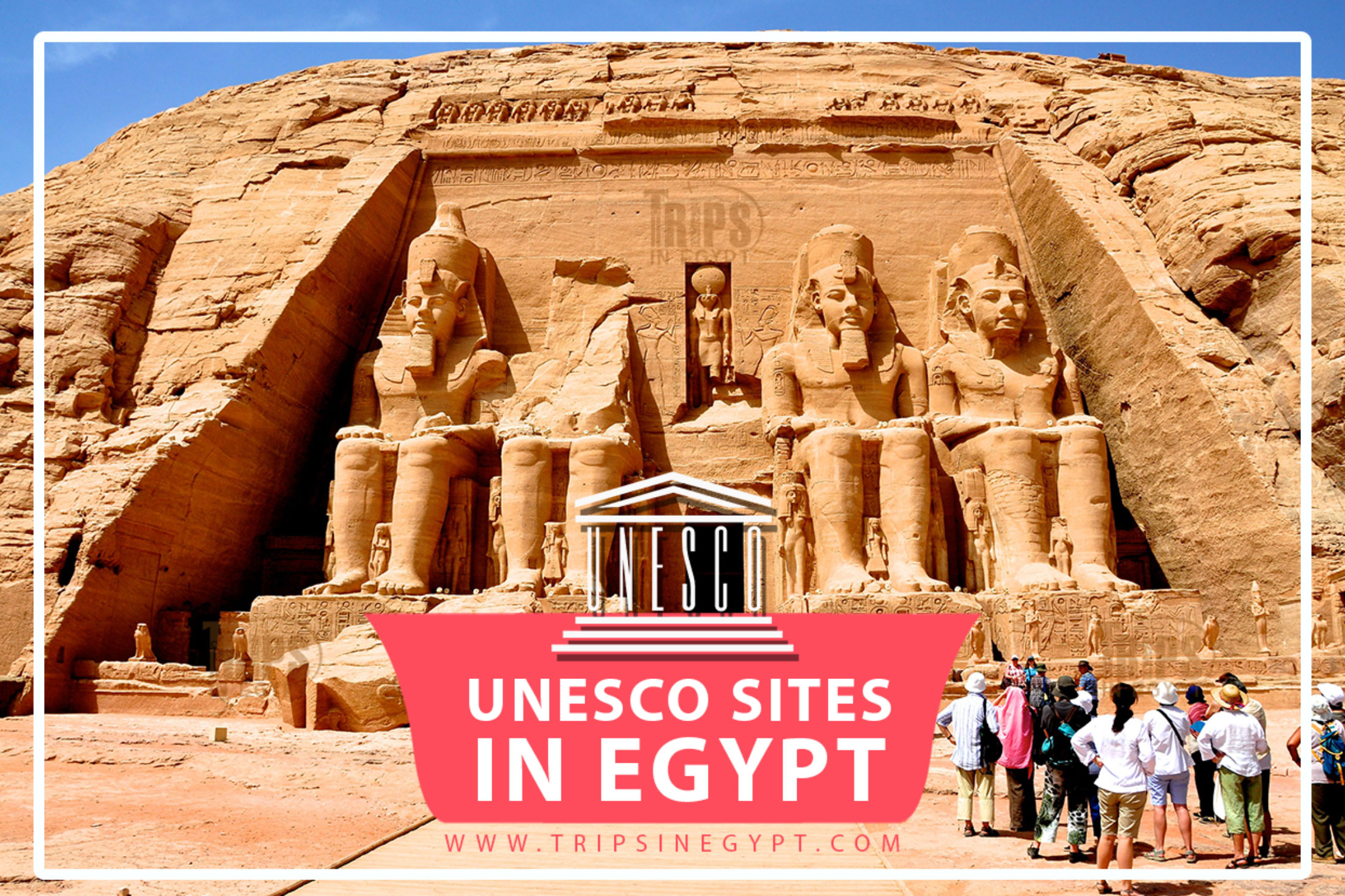
UNESCO World Heritage Sites In Egypt
UNESCO World Heritage in Egypt is the breadcrumbs of an ancient civilization that stood the test of time for over 4500 years that offers a magical glimpse into the overwhelming greatness and creativity that the ancient Egyptians enjoyed across the ages. All the cultural, historical, and natural wonders of Egypt are the embodiments of this magnificent land of wonder that is able to showcase its full heritage which would explain why the United Nations Educational, Scientific and Cultural Organization a.k.a UNESCO too interested and established a number of procedures and techniques to protect these gems against oblivion and preserve their legacy and unique beauty.
Egypt can be called a founding member of the World Heritage Site as in 1954 the Egyptian government requested help from UNESCO to protect all the endangered archaeological sites and monuments such as Philae temple and Abu Simbel from the catastrophic effects of the Aswan High Dam. The success of the project leads to a marvelous chain reaction that produces a number of archaeological rescue missions and preservations all across the globe. Egypt is one of the most blessed countries in the world which represent an outstanding universal value to humanity. Egypt filled with the number of ten criteria to become a world heritage site which is filled with seven wonders which fill in the criteria of Natural and cultural.
These are seven UNESCO World Heritage Sites golden wonders found across every place in Egypt which is able to showcase the magnificent history, art, and culture of this grand civilization that remained significant for over 4000 years, releasing some of the most incredible facts and secrets. Everyone single member of the UNESCO world heritage sites is able to shed light on the highly mixed legacy of Egypt that was affected by a number of different cultures. These seven UNESCO world heritage site marvels are:
- Memphis and its Necropolis – the Pyramid Fields from Giza to Dahshur (1979) (Cultural Heritage)
- Ancient Thebes with its Necropolis (1979) (Cultural Heritage)
- Historic Cairo (1979) (Cultural Heritage)
- Nubian Monuments from Abu Simbel to Philae (1979) (Cultural Heritage)
- Saint Catherine Area (2002) (Cultural Heritage)
- Wadi Al-Hitan (Whale Valley) (2005) (Natural Heritage)
- Abu Mena (1979) (Cultural Heritage)
All of these Egyptian attractions come in different shapes and colors that reveal how Egypt came to be the beacon of innovation and enlightenment during a time of absolute darkness and ignorance. All the wonders are able to give a new perspective on the beliefs and mentality of the ancient Egyptians across the ages. We will explore all the information and details relating to these attractions starting with:

1. Ancient Thebes with its Necropolis
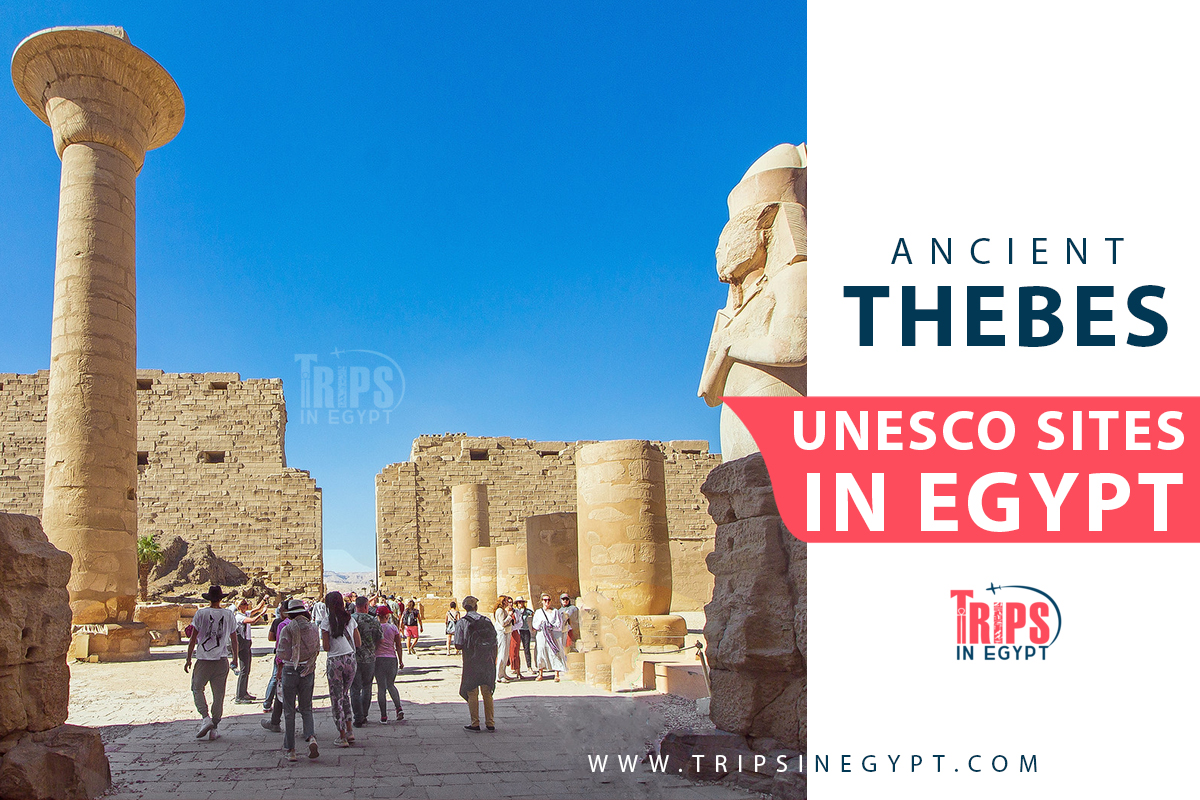
One of the most spectacular attractions found in all of Egypt is the glorious Ancient Thebes with its Necropolis which was known as the ancient capital of Egypt. This celestial city of Amun is the home to a number of countless palaces and temples which are protected by UNESCO for their cultural and historical value. The celestials monuments which can be seen in the Thebes include the Karnak temple complex and Luxor Temple which are found on the east bank of the Nile and on the west bank are the temples of Ramesses III in Medinet Habu, Amenhotep III’s Colossi of Memnon, the Ramesseum of Ramesses II, the temple of Hatshepsut in Deir al-Bahari. The golden tombs in the Valley of the Kings have 63 royal tombs such as the tombs of Tutankhamun, the entire dynasty of Ramsess, Hatshepsut, Amenhotep III, and more plus there are the tombs in the Valley of the Queens, and Deir al-Medina the royal workmen village.
All these archaeological wonders are able to show the full power, wealth, and cultural achievements of the ancient Egyptians. Thebes is found 500 mi (800 KM) and 419 mi (675 km) south of modern Cairo on the eastern bank of the Nile River where it was the crown jewel of Egypt during the new kingdom of Egypt (1570-1069 BCE) where it was the home of kings and queens from the 18th to the 20th dynasties plus the city itself took its first steps in the Middle Kingdom of Egypt (2055–1650 BC). Thebes was the center of life itself and home of every religious, cultural, and administrative action. The city of Amun had a number of political disturbances and has gone through many changes across the ages.
In Thebes are a number of the most magical examples of ancient Egyptian artistic architecture as seen across the astral temple of the beautiful Queen of Hatshepsut (1478 – 1458 BC), the enchanting Luxor temple home of the royals kings, and the gigantic Karnak temple where the Theban triad of Amun, Khonsu, and Mut was worshipped. Within Thebes is the magical Avenue of Sphinxes which leads 2,700 meters long lined with over 600 sphinxes connecting Karnak Temples and Luxor Temple where they were used in the celebration of Opet. The city of Thebes and all of its treasures were inducted into the Unesco heritage cities in 1979.

2. Historical Cairo
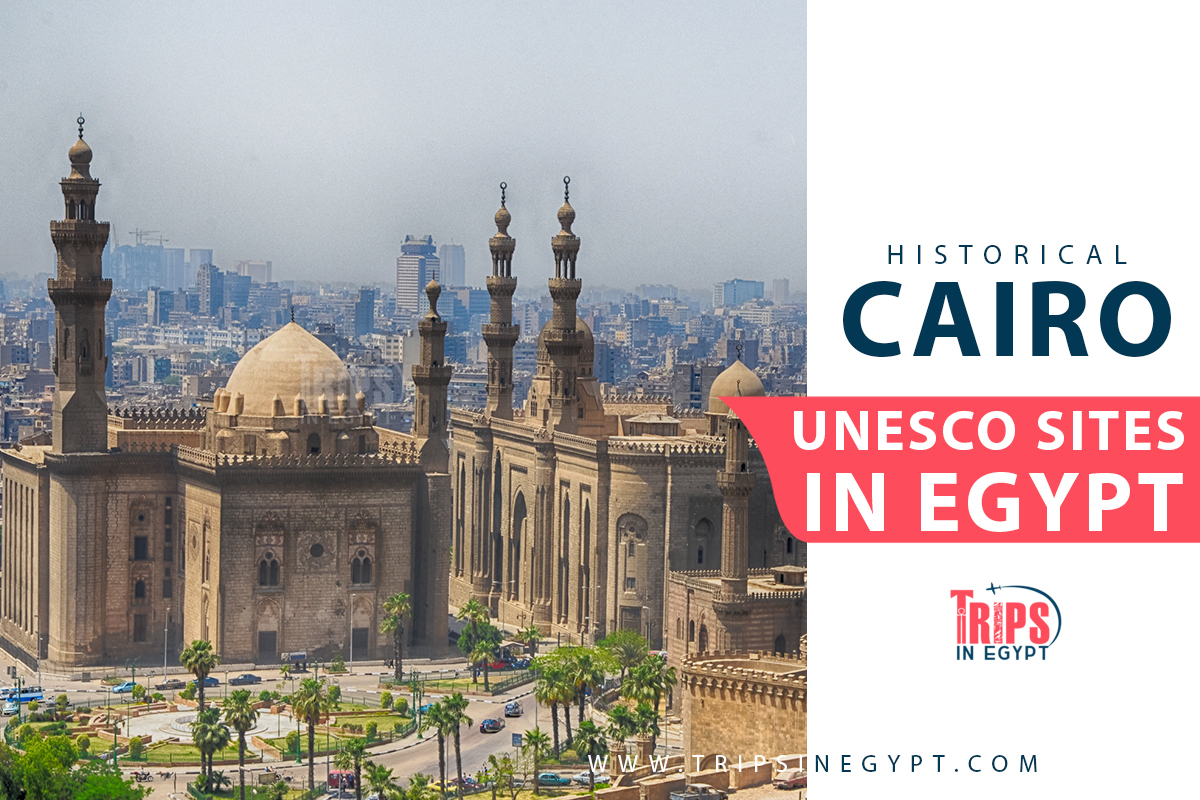
Islamic Cairo or Medieval Cairo is the heart and mind of Egypt which is filled with an unfathomed rich history from the golden Islamic ages. It was designated as a World Heritage Site in 1979 due to its unique architectural and cultural significance. the United Nations Educational, Scientific and Cultural Organization (UNESCO) stated that historical Cairo is "one of the world's oldest Islamic cities, with its famous hammams, mosques, madrasas, and fountains" and "the new center of the Islamic world, reaching its golden age in the 14th century."
The site covers an area of around 160 hectares and encompasses several important Coptic and Islamic monuments, including the Hanging Church, the Ben Ezra Synagogue, the Mosque of Ibn Tulun, the first Mosque in Africa Amr Ibn Alas Mosque, the Al-Azhar Mosque, Cairo Citadel, Muizz Street, the Al-Hakim Mosque, the Qalawun Complex, the Al-Aqmar Mosque, Khan El Khalili Bazaar, the Sultan Hassan Mosque, and many more.
The capital of Egypt Cairo came into existence by the general of the Fatimid Caliph al-Mu’izz Jawhar Al Siqilli in 969 BC where the city grow at great rates to hold hundreds of mosques, madrasas, tombs, caravanserais, mansions, and fortifications. In the entire Islamic World, Cairo is famous for containing the densest and most highly preserved creations of historical art and architecture that convey the most profound facts.

3. Memphis and its Necropolis – the Pyramid Fields from Giza to Dahshur
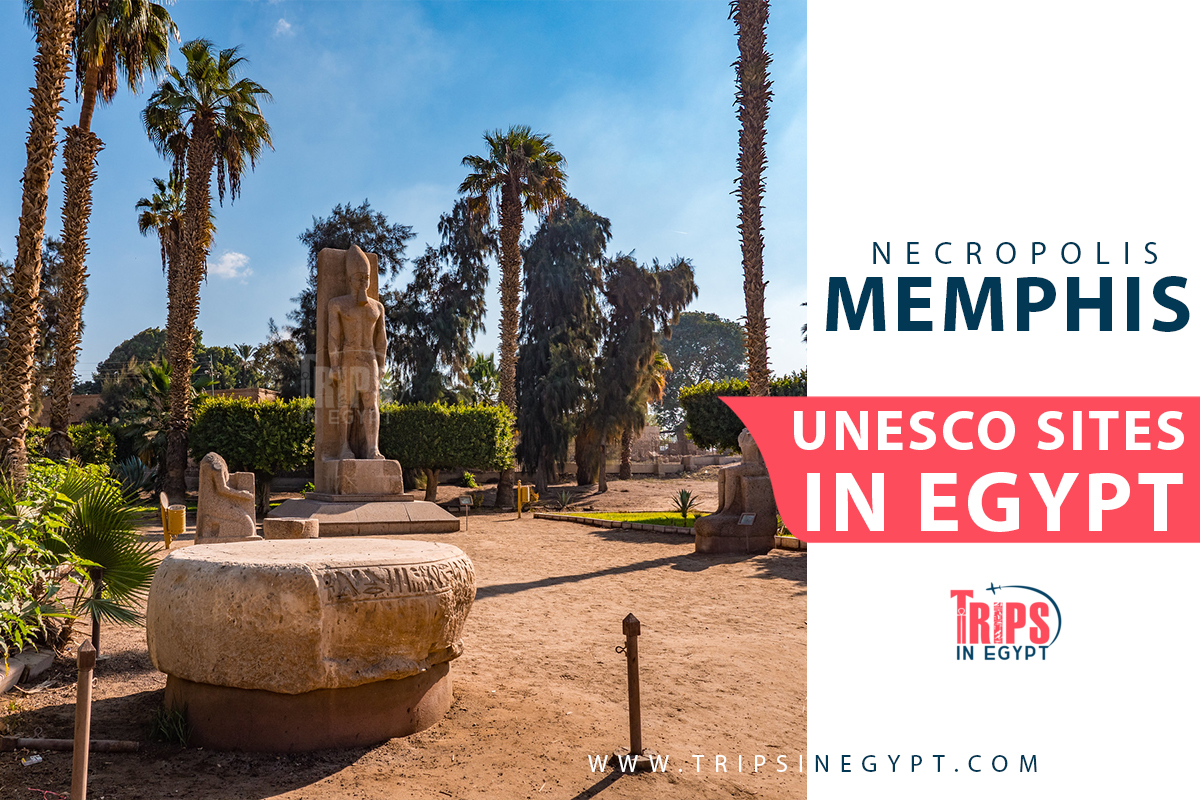
The lands of Giza and Memphis are the homes of the living miracles of ancient Egypt. Memphis and its Necropolis – the Pyramid Fields from Giza to Dahshur was designated as a World Heritage Site in 1979 due to its exceptional cultural and historical significance. This UNESCO world heritage site is made of the ancient city of Memphis the capital of Egypt during the Old Kingdom period (2700–2200 BC) which became known as the age of pyramids. Just 30 km from the capital city of Memphis are rock tombs, ornate mastabas, temples, and the majority of the pyramids which are found in complexes of Giza, Abusir, Saqqara, and Dahshur. In Saqqara is the first Egyptian pyramid, the Step Pyramid of Djoser which was made in the 27th century BC and within Saqqara are countless unearthed tombs that date back more than 4500 years.
The Giza site includes the famous pyramids of Giza, which hold the great pyramid of Khufu the Seven Wonders of the Ancient World, and the mythical Sphinx. Within the marvelous site of Dahshure are the Bent Pyramid and the Red Pyramid of Sneferu which are considered some of the earliest large-scale stone pyramids in Egypt. These pyramids are remarkable not only for their size and age but also for their architectural style and construction techniques, which demonstrate the high level of mathematical, engineering, and architectural knowledge of the ancient Egyptians.
In the hidden location of Abusir are a number of marvelous pyramids that dates to the 25th and 24th centuries BC which were overtaken by the powers of the time. The site also includes the remains of the ancient city of Memphis, including the Temple of Ptah, the temple of the Sphinx, and several other important structures. These monuments provide valuable glimpses and insights into the religious, cultural, and political life of ancient Egypt, and are considered some of the most important archaeological sites on the planet.

4. Nubian Monuments from Abu Simbel to Philae
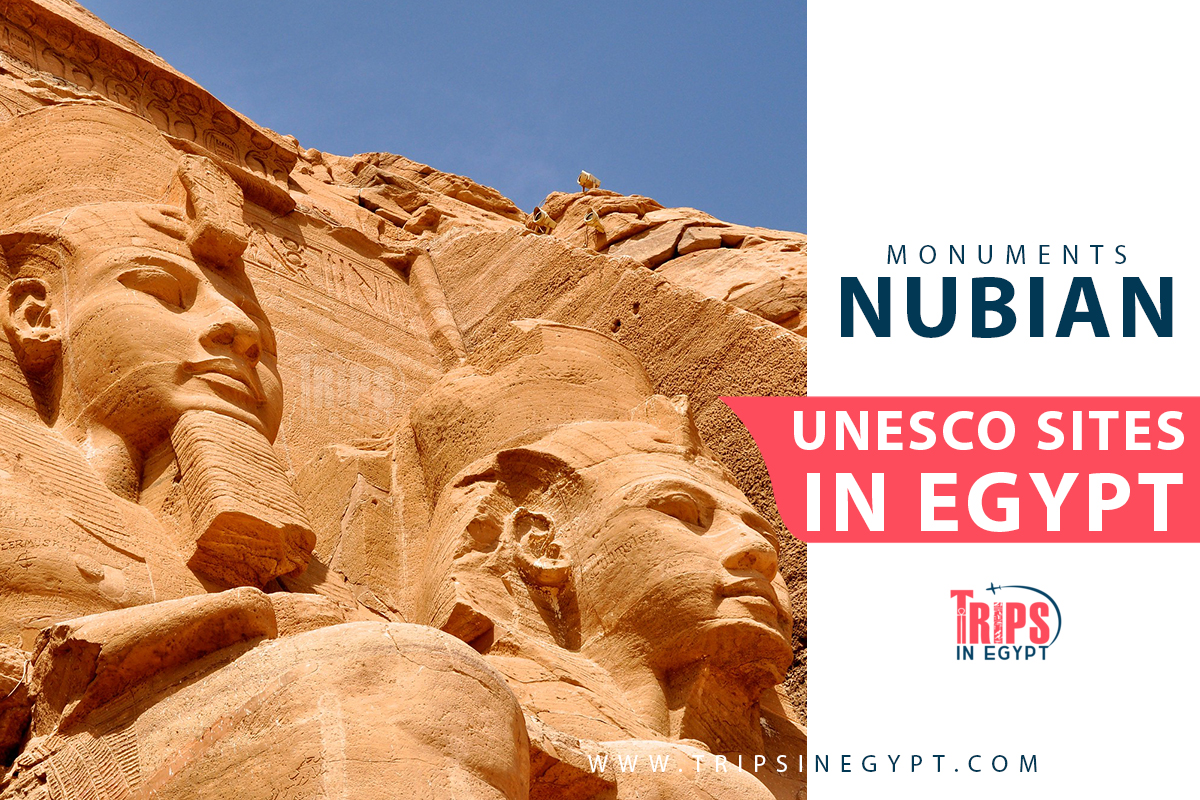
Between the blessed geographic region of northern Sudan and southern Egypt are the Nubian Monuments from Abu Simbel to Philae which were designated as a UNESCO World Heritage Site in 1979 due to their exceptional cultural and historical significance. The site provides valuable insights into the cultural and religious practices of ancient Nubia, as well as its relationship with other ancient civilizations such as Egypt and Greece.
The temples of Ramesses II in Abu Simbel, the Temple of Amada, the ancient city of Elephantine ruins, Wadi Sebua, Philae Temple (Island of Agilkia), Kalabsha Temple, the unfinished obelisk in Aswan, the Monastery of St Simeon, a number of the ancient granite quarries, and the tombs of the Nobles. 22 monuments from the region of Lower Nubia were relocated between the 60s and 80s in one of the most successful archaeological rescue missions in history after the construction of the Aswan High Dam which involved the help of 50 countries and over 260 million dollars in today’s money.
The mythical Philae temple stands as one of the most beautiful archaeological wonders and the latest to be built which was made in between 380-362 BC by king Ptolemy II to narrate the tales of Isis the goddess of motherhood and the wife of Osiris the ruler of the Underworld. The Colossal vision of divine glory Abu Simbel is an immortal piece of art made by Ramses II between 1244 and 1224 BC to immortalize his heritage, identity, and his victory in the battle of Kadesh in 1274 BC which ended in the signing of the first documented peace treaty in history plus honor the gods of Amun-Ra, Ptah, and Ra-Horakhty.

5. Saint Catherine Area
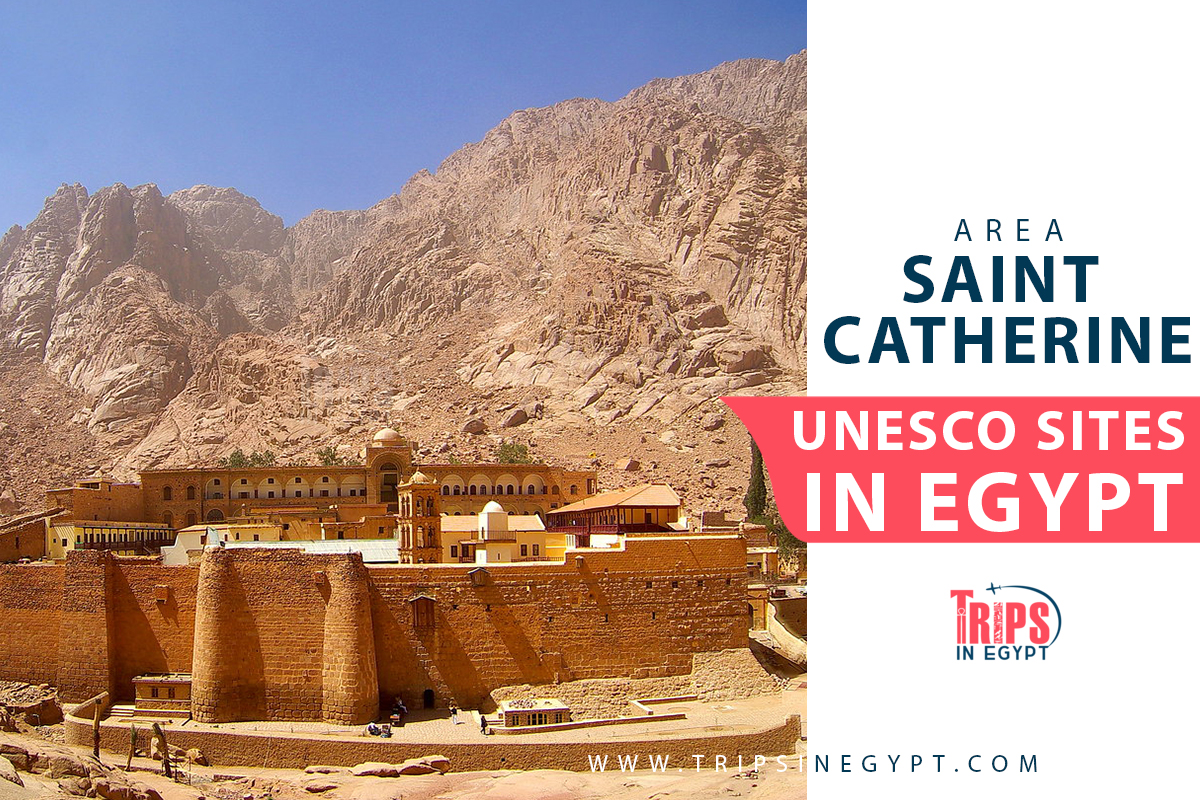
Saint Catherine's Monastery "Sacred Autonomous Royal Monastery of Saint Katherine of the Holy and God-Trodden Mount Sina" is a magnificent Eastern Orthodox Christian monastery found at the foot of Mount Sinai in the Sinai Peninsula in Egypt. The area is the oldest inhabited Christian monastery that was established between 548 and 565 AD by emperor Justinian I which was the home to the burning bush of Moses mentioned in the Book of Exodus. The Chapel of the Burning Bush is located near the site where Moses is said to have received the Ten Commandments from God. In the area, a number of relics belonging to saint Catherine were found.
The Saint Catherine Area contains several important cultural and natural sites, including the Jebel Musa, Mount Sinai, and the Sinai Desert. The Jebel Musa is a mountain that is believed to be the biblical Mount Sinai, and it is considered to be one of the most important pilgrimage sites in the world. The Sinai Desert is home to several important Bedouin communities and is known for its stark beauty and unique ecosystem. Within the area is the oldest continuous operation library in the world which hold the Codex Sinaiticus and the Syriac Sinaiticus.
Within the monastery of Saint Catherine are a number of artifacts, icons, and documents dating to the Byzantine and Roman eras; there is also an incredible 12th-century enchanting painting of the Ladder of Divine Ascent. It holds major importance to the early days of the three Abrahamic religions of Christianity, Islam, and Judaism which would explain why it was added as a UNESCO world heritage site in 2002.

6. Abu Mena
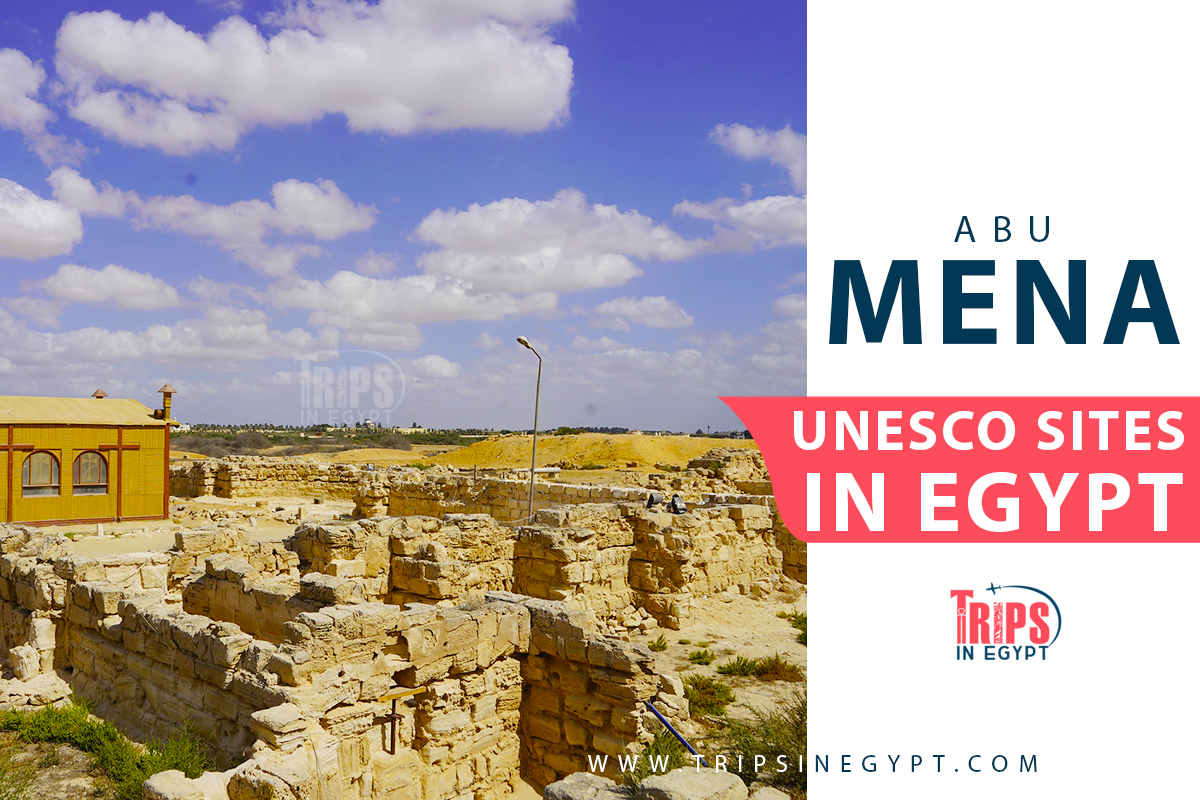
The magnificent Abu Mena is a very significant Coptic town, a monastery complex, and a marvelous Christian pilgrimage center that dates to the fourth and fifth centuries AD in late antique Egypt. It is found in New Borg El Arab city in the southwest of Alexandria which sits on an area of 83.63 ha (0.3229 sq mi). It was declared a UNESCO World Heritage site in 1979 for its outstanding cultural and religious significance. It was believed to be the birthplace of Saint Menas, a Christian martyr. The town of Abu Mena grew around the site of Saint Menas's tomb which became an important center of worship and trade.
The site of Abu Mena contains several well-preserved churches, including the Church of Saint Menas, the Church of Saint George, the great basilica, and the Church of the Martyrs. These churches were built over the tomb of Saint Menas and were decorated with beautiful mosaics and frescoes that provide a glimpse into the religious and cultural practices of early Christians in Egypt. it also contains the remains of a monastery, a bathhouse, and several other buildings that once served the needs of the pilgrims and the local community. These structures provide important information about the daily life and social organization of the ancient city. Abu Mina was added to the list of World Heritage in danger in 2001.

7. Wadi Al-Hitan (Whale Valley)
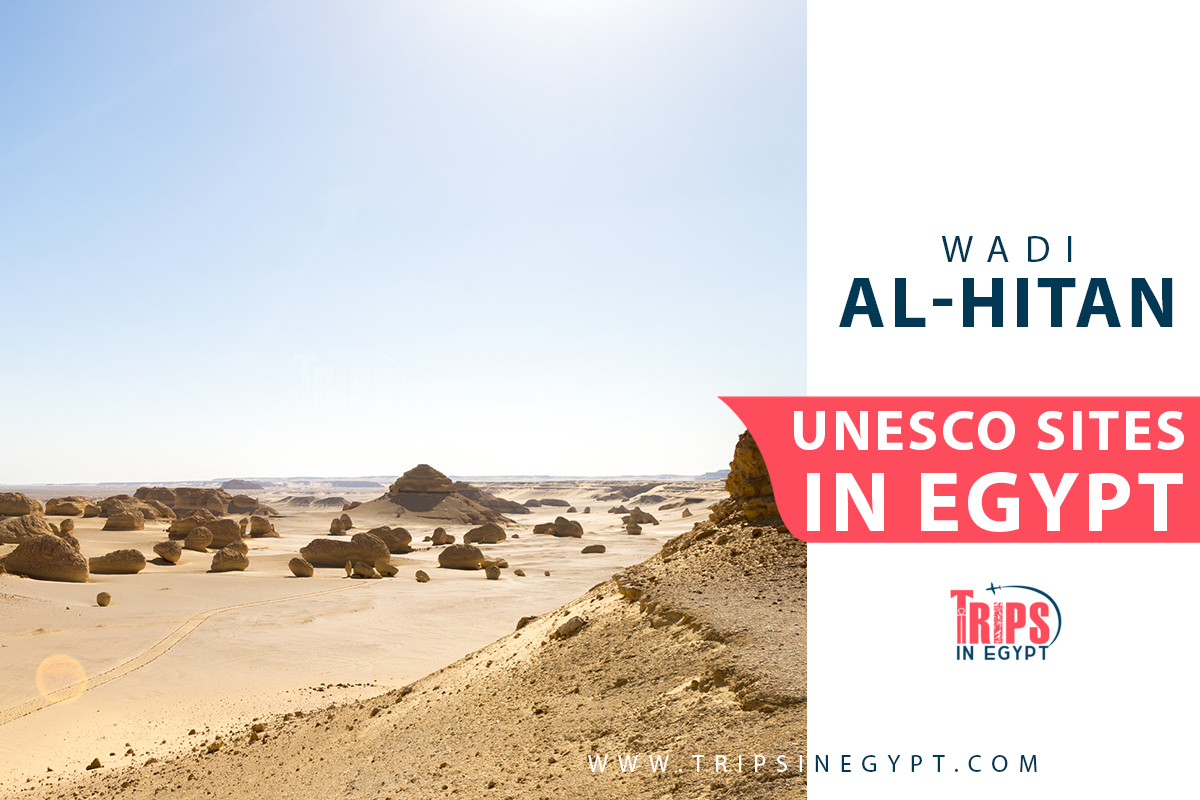
Wadi Al Hitan a.k.a the Valley of Whales is a golden paleontological attraction located in the magnificent governorate of Egypt located on an area of 20,015 ha (49,460 acres). It became a natural UNESCO world heritage site in 2005 that has hundreds of archaeometry fossils which is an extinct sub-order of whales that was able to unlock the greatest mysteries of the evolution of whales from ocean mammals to land-based animals.
Wadi El Hitan contains the remains of other ancient marine life, including sharks, rays, and turtles, as well as plants and trees that once grew along the ancient coastlines. These fossils provide important information about the environmental and ecological conditions of the area during the Eocene period which is approximately 56 to 34 million years ago. The valley was inducted into the UNESCO World Heritage List in 2005.

Egypt’s UNESCO Heritage Sites Tentative List
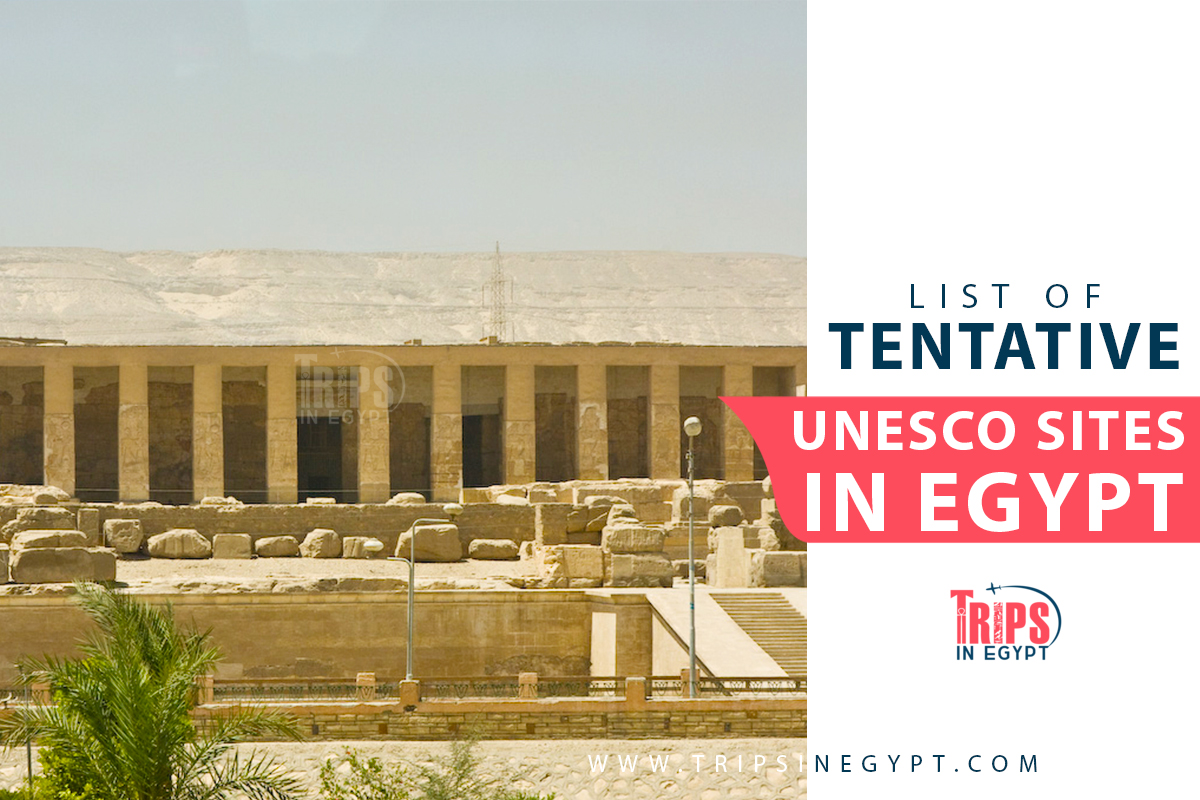
Egypt is blessed with seven incredible archaeological sites that showcase the miraculous heritage of the ancient Egyptian civilization but there are 33 properties found on this tentative list which is the subject of future nomination to join the UNESCO World Heritage List in Egypt. These attractions are:
| Name of Attraction | Year of Entry | Type |
|---|---|---|
| Abydos, city of pilgrimage of the Pharaohs | 2003 | Cultural Heritage |
| Alexandria, ancient remains, and the new library | 2003 | Cultural Heritage |
| Bird Migration Routes | 2003 | Natural Heritage |
| Dababiya | 2008 | Natural Heritage |
| Dahab | 1994 | Cultural Heritage |
| Dahshour archaeological area | 1994 | Cultural Heritage |
| Desert Wadis | 2003 | Natural Heritage |
| Egyptian Museum in Cairo | 2021 | Cultural Heritage |
| El Fayoum | 1994 | Cultural Heritage |
| El-Gendi Fortress | 1994 | Cultural Heritage |
| Gebel Qatrani Area, Lake Qaroun Nature Reserve | 2003 & 2023 | Mixed Heritage |
| Great Desert Landscapes | 2003 | Natural Heritage |
| Helwan Observatory | 2010 | Scientific Heritage |
| Historic quarters and monuments of Rosetta/Rachid | 2003 | Cultural Heritage |
| Kharga Oasis and the Small Southern Oases | 2015 | Mixed Heritage |
| Minia | 1994 | Cultural Heritage |
| Mountain Chains | 2003 | Natural Heritage |
| Necropolises of Middle Egypt | 2003 | Cultural Heritage |
| Newibah castle | 1994 | Cultural Heritage |
| North Sinai archaeological Sites Zone | 1994 | Cultural Heritage |
| Oasis of Fayoum | 2003 | Cultural Heritage |
| Pharaon Island | 1994 & 2003 | Cultural Heritage |
| Pharaonic temples in Upper Egypt | 2003 | Cultural Heritage |
| Raoudha Nilometre in Cairo | 2003 | Cultural Heritage |
| Ras Mohammed | 2002 | Natural Heritage |
| Rutho Monastery | 1994 | Cultural Heritage |
| Siwa archaeological area | 1994 | Cultural Heritage |
| Southern and Smaller Oases, the Western Desert | 2003 | Natural Heritage |
| Temple of Hator built by Ramses III | 1994 | Cultural Heritage |
| Temple of Serabit Khadem | 1994 | Cultural Heritage |
| The An-Nakhl fortress | 2003 | Cultural Heritage |
| The monasteries of the Arab Desert and Wadi Natrun | 2003 | Cultural Heritage |
| Slahdin' Al-Gundi and Phataoh's island citadels in Sinai | 2003 | Cultural Heritage |
| Wadi Feiran | 1994 | Cultural Heritage |

Conclusion
With our fabulous Egypt vacation packages and Nile cruises, everyone can explore Egypt’s UNESCO heritage sites and live the adventure of a lifetime between the greatest collection of archaeological wonders found across the lands and waters of Egypt which has the power to bring to life the history and culture of Egypt. Cast your eyes on all the immortal marvels of Egypt and make every moment of your life worthy of remembering and enjoy your time to the fullest.
Great vacation for 4 days in Cairo Egypt accompanied by an e...
Duration
4 Days / 3 Nights
Availability
Everyday
An Incredible 5 days Cairo & Alexandria tour package to expl...
Duration
5 Days / 4 Nights
Availability
Everyday
Explore Egypt's ancient wonders on a 6 days vacation to Cair...
Duration
6 Days / 5 Nights
Availability
Everyday
Breathtaking 7 days Cairo, Luxor & Hurghada holiday to explo...
Duration
7 Days / 6 Nights
Availability
Everyday
FAQ
What Should I Wear While Being in Egypt?
You should wear whatever you want. It is advised to wear something light from cotton or linen, comfortable and put on sunblock during your time in Egypt in the summer and wear comfortable footwear like a closed-toe shoe to sustain the sandy terrain.
What to Pack for Your Egypt Tour?
You should bring a brimmed hat and sunglasses if you not used to the Egyptian sun &pack everything you could ever need and put in a small bag so you could move easily between your destinations.
Are All Nile Cruises Available at Any Time?
Yes, it is available all years. as the Nile from Aswan to Luxor takes three to four days of sailing on Monday, Wednesday and Friday for the total cost of 600$ and the Nile cruise from Luxor to Aswan take four to five days in Saturday, Monday and Thursday for the coast of 650$.
Why book Trips in Egypt?
We have experience in vacation planning for more than 10 years & our staff consists of the most professional operators, guides and drivers who dedicate all of their time & effort create the perfect vacation. All of our tours are customized by Travel, Financial & Time advisors to fit your every possible need during your time in egypt. we always keep in mind that your safety & comfort are our main priority until you return home.
Is it safe to travel to Egypt?
Yes, it is absolutely safe to travel to egypt, You will feel secure in Egypt as the current atmosphere of the country is very peaceful after the government took powerful measures like restructuring the entire tourist police to include all the important and tourist attractions in Egypt and construct an entire environment dedicated for ensuring the lives of all tourists.
What are Egypt's Visa Requirements?
They are very simples, If you want to apply for a Visa On Arrival that lasts for 30 days then you should be one of the eligible countries(check the link), have a valid passport with at least 6 months remaining and pay 25$ USD entry fee in cash. As for the E-Visa for 30 days, you should have a valid passport for at least 8 months, complete the online application, pay the e-visa fee then print the e-visa to later be presented to the airport border guard. You could be one of the countries eligible for a free visa for 90 days.
What is the Weather is Like?
The temperature of Egypt ranges from 37c to 14 c, Summer in Egypt is somehow hot and winter is cool and mild but sometimes it becomes cold at night. The average of low temperatures vary from 9.5 ¡ÆC in the wintertime to 23 ¡ÆC in the summertime and average high temperatures vary from 17 ¡ÆC in the wintertime to 32 ¡ÆC in the summertime while the temperature is moderate all along the coasts.
What is the Best Time of Visit Egypt?
It is known the best time to travel to Egypt is in the winter from September to April as the climate becomes a bit tropical, a warm atmosphere with a winter breeze. You will also be notified a week before your trip if the weather is unsafe or if any changes have been made.
Should I Give Tips in Egypt?
It is totally up to you, but if you choose to you can tip the servers at your restaurant 5-10% by handing it to them directly and 5 Egyptian Pounds as a general tip of anyone.
Can I Enter the Pyramids?
Yes, you can enter the pyramids for the small fee of 20$.
How to Enjoy Egypt During Ramadan?
Ramadan is a special time of year for Muslims that should be celebrated by non-Muslims and feel the essence of the Islamic culture. You can fast with the Muslim or just observe but you are always welcome to join the celebrations and festivals.

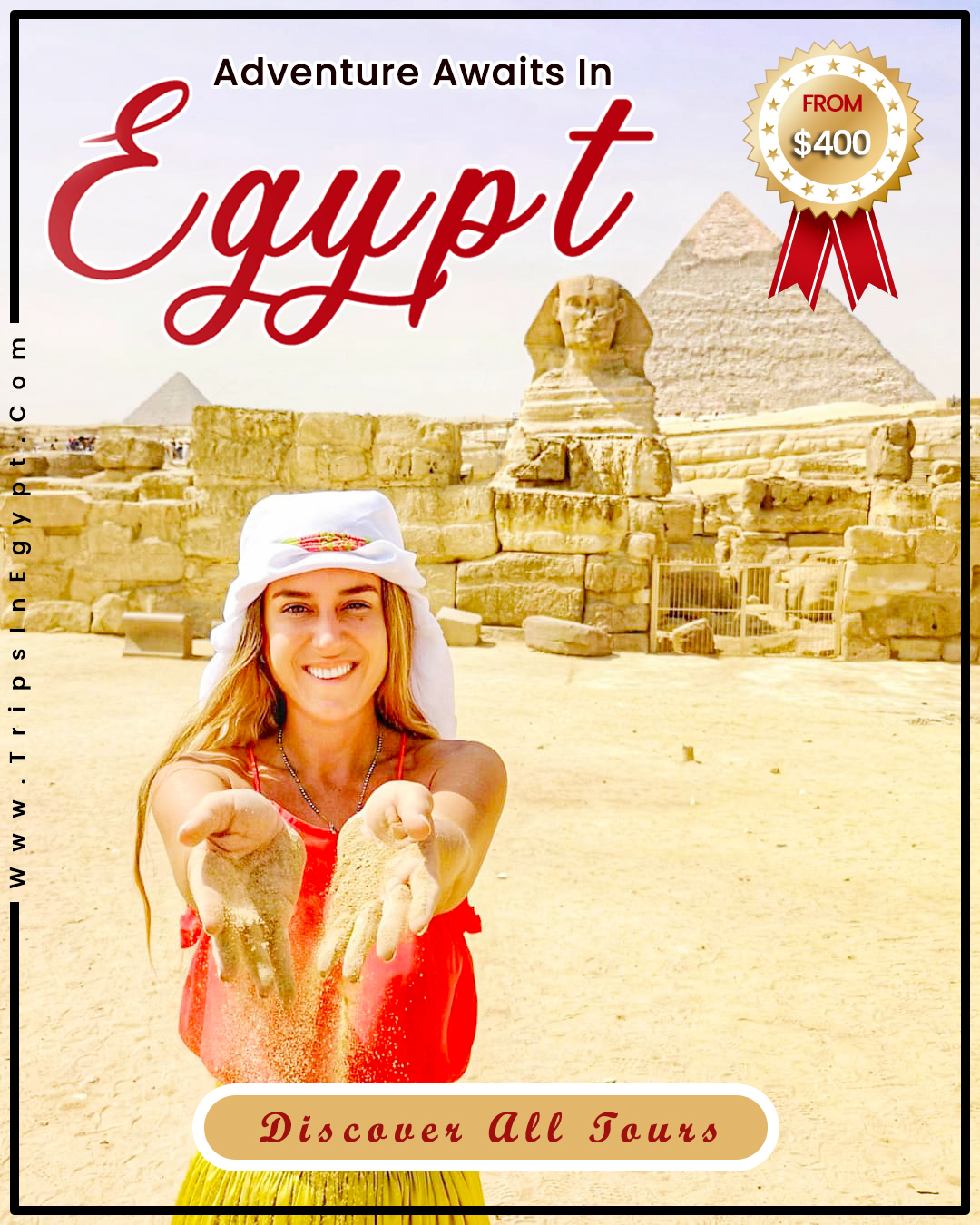
Share Your Comment